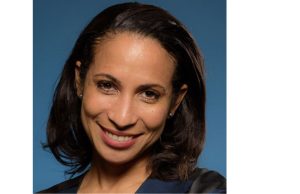The day after the terror attack at the Boston Marathon organizers of the London Marathon said the race would go on as planned. It was run on April 21, less than a week after the bombing that killed at least three people and wounded nearly 200.
“I applaud London’s decision to carry on, and that’s the message that should reverberate around the world,” said Bruce Burch, a cause marketing and partnership consultant in San Francisco, Calif. He doesn’t see the events in Boston as having a detrimental effect on future event fundraising. “If anything, it’s a statement that we must go on,” he said. “From a sponsorship standpoint, if I had a client that was wondering if they should participate in a marathon, I would not see this as a detriment at all.”
The Boston Athletic Association, which organizes the Boston Marathon and several other races throughout the year, declined to comment beyond a statement issued the day after the bombings, citing the ongoing investigation.
Many organizations are rethinking the risk management elements of large, outdoor events. For David Mair, the news from Boston brought back memories of terror tragedy. He was director of risk management for the United States Olympic Committee in 1996 when bomber Eric Rudolph set off an explosive in Centennial Olympic Park during the summer games in Atlanta, killing one person and injuring 111 others.
“In Atlanta in 1996, 30 minutes before the bomb detonated I was standing about 30 feet from where it detonated,” said Mair. “I didn’t even think about where I was standing until it was all said and done,” he said
“You have your crisis protocol and do what you planned to do. In Atlanta, almost every detail of the plan worked almost exactly as we planned it,” said Mair. “We also had taken a hard look at it in light of the bombing of the Murrah building in 1995. We did go back, kick tires on every element of our plan, like where we would locate athletes until we knew the scope of the situation.” The Alfred P. Murrah Federal Building in Oklahoma City, Okla., was bombed on April 19, 1995, killing 168 people and injuring 800. Timothy McVeigh was convicted of the crime and executed while accomplice Terry Nichols is serving a life sentence.
“The challenge for the Boston Marathon is very much like the ways that Atlanta faced in 1996. You have what you want to be a very large public celebration area,” said Mair. “In some ways the incident in Atlanta happened exactly where we thought it would — an area open to the public, without tickets to the event. It’s a large crowd. You can’t screen all of them. We thought there was more of a chance of something happening in the park than at the swimming venue.”
Events such as the Olympics and marathons are points of many fundraising opportunities. There were 46 American Heart Association (AHA) volunteers participating in the Boston Marathon raising money for Teddy’s Team, all of who are accounted for, according to Brenda Clevenger, vice president of field campaigns. Teddy’s Team is named for former New England Patriots linebacker Teddy Bruschi, who suffered a stroke at the age of 31.
AHA sponsors more than 300 Heart Walks annually, ranging in size from 1,000 participants to more than 25,000 in metropolitan cities. There are 55 events planned through the end of May and another 20 in June. The largest races have as many as 500 to 750 volunteers involved in putting on the event.
“Public space is one of our key priorities always, at our events,” said Clevenger. AHA staff looks at existing plans and works with local law enforcement and first responders, in making any necessary changes based on their recommendations. “As far as safety and everything goes, we work very closely with local law enforcement, whatever they recommend, we’ll go with those,” she said.
Although they don’t do formal background checks, AHA has a screening process for high-level volunteers, collecting information and signing release forms. Volunteers often come from referrals by other employees or volunteers who have worked with the organization in the past, or those who have been directly affected by heart disease or stroke.
“Background checks will also be required for prospective volunteers or interns who regularly work on AHA premises, who have access to AHA assets, or whose assignments and activities make it a business necessity and, when required, such background checks will be completed in accordance with the guidelines described for applicants for AHA employment,” according to AHA guidelines.
The process might vary a little by market but also is based on a volunteer’s duties, according to Amit Chitre, director, national strategic communications.A volunteer handling more routine or mundane issues like envelope stuffing wouldn’t go through the same process as one who might be handling cash or working with children.
The American Cancer Society (ACS) did not have a formal organizational presence or fundraising activity but did have about two dozen staff members at the Boston Marathon participating or running. ACS also has a large, regional headquarters presence in the Boston suburbs. “Like many other organizations, we were focused on what occurred, on our people and operations and assess whether everyone was OK,” said Greg Donaldson, ACS’s vice president for corporate communications. All were accounted for, he said.
Donaldson said it was too early to tell what effect the bombing might have on future fundraising charity events like ACS’s Relay for Life. “Making Strides” in Boston is one of the cancer society’s largest events in the country, with tens of thousands of participants. It’s typically held in the fall so there are still several months of planning, he said.
“We have tested crisis planning protocols that we immediately activated,” said Donaldson, and tried to assess in the immediate aftermath of the attack and the implications in the long term. A review of all practices and policies was initiated. “There may be a need to make a potential enhancement of what we do when we engage large groups of people publicly,” he said.
“We feel very good about our existing infrastructure and security planning. We’re very experienced, probably no other organization in the nonprofit sector, with all due respect, is as skilled at special events as we are,” said Donaldson.
The Juvenile Diabetes Research Fund Tweeted that it had 21 runners in the Boston Marathon. “We’ve received word that all runners & staff have checked in & are safe,” according to the Tweet.
The 21 members of Team JDRF, who raised more than $143,000, were all accounted for a few hours after the explosion, said Kristin Judd, director of Team JDRF. The participants communicated through a combination of text messages, email and Facebook while phone calls were difficult to connect.
The attack on the marathon would not dissuade JDRF supporters from participating in future events. “Just the fact that people are participating in an event, not just doing it for themselves but to support Type 1 diabetes research, it becomes bigger than the marathon itself,” said Judd. JDRF received about $160 million through special events in the most recent fiscal year, and events range in size from 5,000 to 10,000 participants.
“In the fundraising world, we’ve seen 9-11, Katrina, Sandy, things that have physically disrupted events or put the fundraising impetus in another direction,” said Judd. “In the end, we always come back. The desire to lessen and end this disease (Type 1 diabetes) is always going to be the thing that comes back front and center.”
The National Multiple Sclerosis Society (NMSS) issued a statement expressing gratitude for staff and volunteers who were on the course supporting its Marathon Strides Against MS team. The society has accounted for all staff, volunteers and team participants. There were 66 Marathon Strides members running the Boston Marathon, along with 11 volunteers and three staff members.
“As an organization that puts on hundreds of events annually we want to assure our participants that safety remains our top priority and a comprehensive safety plan is in place at all society events. We will, however, be taking extra measures for upcoming events across the country and are currently working with local authorities to determine what extra safety precautions are recommended,” according to the NMSS statement.
The New York City-based NMSS holds some 800 special events across the country each year, ranging in size from a few hundred to more than 13,000 participants, according to spokeswoman Arney Rosenblat. She said the organization receives about 68 percent of its yearly revenue from special events. Its 2011 revenue topped $217 million.
About 250 runners had raised funds on the peer-to-peer fundraising platform Razoo, based in San Francisco, Calif. CEO Leslie Mansford, herself an endurance athlete, doesn’t believe the bombing will affect fundraising or participation in future races. “The U.S. is a resilient bunch of people and an extremely generous bunch of people, and I don’t think something like this will keep people from fundraising or participating in these types of events,” she said. “People are resilient and will want to fight back.”
Joe Waters, a cause marketing blogger and consultant in Boston, said he was about a mile away from the blast, near the marathon’s “Heartbreak Hill” in Newton. “It’ll be interesting to see if people start engaging a little more virtually,” taking advantage of fundraising apps and sites that record a person’s individual daily runs or workouts. “I do think it gives people a different type of uneasiness that makes them feel a lot more vulnerable,” he said.
“The Boston Marathon is such an elite attraction. There’s so much allure and power to it. I don’t think it’ll stop people from participating,” Waters said. But with events that draw big crowds, people might start thinking about it or think twice about going into a wide area, he said.
Former USOC risk manager Mair said that limiting access could be key to stopping such attacks. It’s also a major challenge. Nonprofits need to think about “restricting access to certain areas, high-traffic areas and screening people who come into those areas,” said Mair. “You need to create a limited number of entry points and have the ability to monitor those points of entrance and exit,” he said.
Timing might also be an important element of safety. “I am going to look at Boston. It was Patriots Day and happened to fall on tax day (April 15),” said Mair. “Lots of things that had come together (that day) that wouldn’t necessarily occur if hosting an event on the 13th of October,” he said. While that turned out not to be the case in Boston, there have been numerous instances during the past 15 years that tie attacks to anniversary dates of government action. NPT











